#has obesity increased over the years
Explore tagged Tumblr posts
Text
Obesity Limit by Age 2023
New Post has been published on https://bankakredin.com/obesity-limit-by-age-2023/
Obesity Limit by Age 2023
For a healthy life, the body weight must be within the limits suitable for the body mass index. As the person moves away from healthy values, the risk of disease increases and the comfort of life decreases, regardless of age. Obesity is the disease of the age with increasing fast-food style nutrition and decreasing movement around the world. Increasing fast-food consumption increases lubrication and causes the person’s body weight to be outside the limits that should be according to height and age. Adults and children who have reached the point of obesity should be treated as soon as possible. You ask, “How many kilos is the obesity limit for age?” If you are wondering the answer to the question, you can take a look at the details.
What is Obesity? What Weight Does Obesity Start From?
Obesity is the accumulation of too much fat in the body to affect the metabolism. A person is considered obese if their weight is higher than their body area. The Body Mass Index value is used to determine obesity in adults. This value, which is calculated by dividing the body weight by the square of the height in centimeters, indicates obesity when it is 30 kg/m2 and above. Obesity can be evaluated not as weight, but by the ratio of the weight to the height of the person. In children, obesity is calculated with standard growth charts, not BMI. In order to find the obesity value, the child’s age and height are found from the chart and it is checked at what age the height corresponds to the 50p value. From the age-based weight chart opened for the age reached, the percentile of the weight for the age, that is, the p value, is checked.
Obesity Values in Children
Obesity age and weight limit in children is not the same as in adults. Height, weight, and body mass index charts for boys and girls vary in children. Obesity in children can be understood with two methods. The first method is to find the p value of the body mass index according to age by opening the BMI percentile scale for age after the body mass index is calculated. If the value is 95p and above, obesity is considered. The second method is calculated over the weight value according to the height age. Obesity is considered to be 97p and above when looking at the weight according to the height and age of 95p and above. With this method, the following steps can be followed for obesity calculation:
The age-height percentile chart is opened according to the gender of the child.
The age at which the height corresponds to the value of 50p is found and noted.
The age found is the age of height.
The weight percentile chart is opened according to the age of the child.
The age of height is found and it is noted which p-value corresponds to the weight.
If the result is 97p or higher, it is considered obesity and an expert opinion is required.
Obesity Values in Adolescents
It would be wrong to ask the question of what is the obesity weight limit in adolescents as in children. According to the World Health Organization, adolescence covers the ages of 10-19. Obesity in adolescents is calculated as in children, and the accepted values for obesity are as follows:
95p and above in boys based on BMI:
10 years: 22.5 kg/m2
11 years: 24.5 kg/m2
12 years: 26.0 kg/m2
13 years: 26.5 kg/m2
14 years: 27.0 kg/m2
15 years: 27.6 kg/m2
16 years: 28.2 kg/m2
17 years: 28.8 kg/m2
18 years: 29.4 kg/m2
For girls, 95p and above based on BMI:
10 years: 22.6 kg/m2
11 years: 23.8 kg/m2
12 years: 24.8 kg/m2
13 years: 25.4 kg/m2
14 years: 25.8 kg/m2
15 years: 26.0 kg/m2
16 years: 26.1 kg/m2
17 years: 26.2 kg/m2
18 years: 26.1 kg/m2
Obesity Values in Adults
Those with a body mass index of 30 and above are considered obese. But obesity is also divided into levels within itself. 30-34.99 kg/m2 BMI indicates 1st degree obesity, 35-39.99 kg/m2 BMI indicates 2nd degree obesity, and 40 kg/m2 and above BMI indicates 3rd degree obesity. As the obesity value increases, the risk of disease also increases. It can cause heart diseases, stroke, type 2 diabetes, some cancers, gallbladder diseases, sleep apnea, calcifications. The treatment of the resulting health problems becomes even more difficult in obesity.
Risk of Obesity-Related Disease Occurrence in Adults
While measuring the risk for health in obesity, waist circumference and hip circumference are taken into account. A waist circumference of 88 cm or more in women and a waist circumference of 102 cm or more in men means that weight is risky for health. Another risk factor indicator is the waist to hip ratio. If waist/hip is more than 0.85 in women and more than 1.0 in men, it means android type, that is, male type obesity. Android type obesity increases the risk of developing diseases and reduces the chance of treatment.
What are Obesity Treatment Methods?
Fat loss is the basis of obesity treatment. For fat loss, the person needs to get rid of the excess weight in his body. Vital changes such as increasing physical activity, reducing calorie intake, and choosing healthy foods help weight loss, but sometimes these methods alone are not enough in obesity. The methods applied by the person himself may prolong the process or fail. Various methods can be used for weight loss, but these methods must be selected and applied by specialist physicians and dietitians. Methods applied by experts include diets and bariatric surgery. The method to be used is determined according to the person and the most appropriate method is selected according to the needs of the person by making appropriate analyzes by the specialist doctor staff.
Weight Loss with a Healthy Eating Plan
One of the most used obesity treatment methods is healthy nutrition lists applied with a dietitian. With diets, weight loss of 5% to 10% of the initial weight is expected within 6 months. By creating calorie deficits in nutrition plans, the weight loss process begins with exercise support. It is possible to lose weight slowly and healthily with the diet lists given to the person. However, diet can be a difficult and motivational method for some people. In such people, if the doctor deems it appropriate, obesity surgery is directed.
Bariatric Surgery
Weight loss is achieved through surgery in people with serious health problems who cannot diet or cannot achieve the desired result with obesity surgery . The surgical method applied is gastric bypass surgery. With this surgical procedure, also known as Roux-en-Y, the stomach is surgically reduced, but while food intake is reduced, nutrient absorption from the intestines is also reduced. Gastric bypass is divided into types in itself. One of them is sleeve gastrectomy , also known as sleeve gastrectomy. Thanks to bariatric surgery, the person loses 75% of their weight within 1 year after the operation, and thanks to the shrinking stomach volume, they gain early satiety and gains in some diseases thanks to the weight they lose.
The problem of obesity, which carries a health risk, is a disease that is increasing day by day and treatment methods are developing. By finding the appropriate treatment method, plans should be created according to the person and it should be ensured that the person regains his/her health in the most correct way. Obesity can occur not only in adulthood but also in childhood and adolescence. It is wrong to believe that children will get weaker as they get older. If obesity is present at an early age, it is important to consult a specialist and start the treatment with the most appropriate method when treatment is necessary in order to prevent health risks that may occur in the future of children.
Medical Park, with its 27 hospitals in Turkey, helps people in the treatment of obesity and treats obesity patients with advanced surgical and medical methods. If you think you or your child has an obesity problem, you can make an appointment and be examined.
obesity limit by age, are obesity rates decreasing, are obesity rates increasing in america, are obesity rates rising, are obesity rates going down, can obesity shorten life expectancy, can obesity shorten your life, can obesity affect height, can obesity be considered a disability, does obesity age you, did obesity increase in 2020, does obesity reduce life expectancy, does obesity increase with age, what age does obesity affect the most, at what age does obesity become dangerous, does obesity affect life expectancy, does obesity lower life expectancy, has obesity increased over the years, has obesity increased, has obesity always existed,
#are obesity rates decreasing#are obesity rates going down#are obesity rates increasing in america#are obesity rates rising#at what age does obesity become dangerous#can obesity affect height#can obesity be considered a disability#can obesity shorten life expectancy#can obesity shorten your life#did obesity increase in 2020#does obesity affect life expectancy#does obesity age you#does obesity increase with age#does obesity lower life expectancy#does obesity reduce life expectancy#has obesity always existed#has obesity increased#has obesity increased over the years#obesity limit by age#what age does obesity affect the most
2 notes
·
View notes
Text
Rebound
It has to hurt to see what you look like now. All the shapeless mounds of fat weighing you down, distorting what was, until fairly recently, an average figure. You were so close to getting back to a normal weight, too — years of struggling to come down from a size at which you couldn’t lumber more than a few feet before getting red-faced and breaking out in a sweat. And you did it; somehow, you got yourself small enough to be able to shop in regular clothing stores again, and to not even need to buy their biggest sizes. Everyone was so proud of you. Telling you how good you looked. How much healthier it was to be this size. How much happier you had to be, now that you could move around and be active again. You’d beaten obesity.
Except you hadn’t, had you? Because every diet fails eventually, and fat doesn’t go away. Fat cells shrink when you diet. They quiet down when you restrain your appetite. And then they wait, lurking in that slender body, disguised by loose skin. Waiting for their moment to come back with a vengeance.
You may not even remember what triggered it now — maybe it was a really rough couple of days at work, maybe a relationship disappointment, maybe drama with family or friends. But something made you take two cheat days in a row, just to treat yourself a little and make up for everything crappy you’d had to deal with lately. And that was all it took to wake the monster sleeping inside you.
A couple of cheat days turned into having snacks around that you hadn’t allowed yourself since you started losing weight — because you had things under control, right? Portion sizes started creeping upward again, and fattier, carbier foods started replacing the lean meats and fresh veggies that helped you shed the pounds in the first place — because you lost it before, so you can lose it again if you need to, right? You went easier on yourself, skipping morning walks and trips to the gym with increasing frequency, giving yourself fewer and fewer opportunities to burn all the excess calories you’d started dumping down your throat again — because you were always going to make up for the missed sessions at some point, right? At least, those were the ways you rationalized your backsliding to yourself.
You probably didn’t know this before, but regains are a bitch. Your body’s felt you starving for years — that’s all a diet is, as far as it’s concerned — and now the famine’s over. Food’s abundant again. Time to eat and try to get you ready for the next famine, which it has no way of knowing is never coming, unfortunately for you. Every calorie it can spare from keeping you alive gets absorbed into those fat cells that used to be dormant. The weight packs on faster than it ever went away. And almost before you realize it, your puffy belly is back, your ass is filling up more of your pants, and your thunder thighs and double chin are beginning to make their appearance.
I’m sure you tried to get things back under control once you realized what was happening. You tried to get back out there and exercise again once your girth started popping buttons and tearing the seat out of pants, and you had to pull your fat clothes out of storage. You tried to eat better and ignore the cravings for everything high in fat and sugar and everything bad for you when your love handles and bingo wings and thunder thighs started rubbing against chair arms and door frames in a way they hadn’t for a long time. And then, once all of that had failed, you tried to simply ignore what was happening — to pay no attention to how your body was ballooning up to fill even your fat clothes; how difficult it was to heave your hanging belly and plump ass up and haul it wherever you needed to go; how the face in the mirror wasn’t the thin, lean, angular one you’d gotten used to seeing, but the bloated, pinched, bulbous fat face set atop a cascade of double chins that you thought you’d never have to look at again. Just muddle through, you must have thought, and eventually you’ll get a handle on this.
How’d all that work out for you? Not great, judging by the way you look now. Those legs that look like pinched sacks of custard, almost too blobby and bulky to move, don’t exactly signal someone in control of their situation. Neither does the enormous, wobbling belly spreading out over your knee folds and across the bed, or the hips bulging out at either side like melting lumps of dough overflowing a mold. And the double chins, resting on two massive boobs each the size of a fat belly in their own right, squeezed by the fat of pillowy arms plopped uselessly at either side — well, all that hardly looks like someone keeping their weight in check with responsible diet and exercise. I’m gonna guess you’re not, are you?
That’s why you had to call me in. Trust me, I see people just like you all the time. Weight’s bounced around for years, they’ve tried to diet and exercise, sometimes it’s worked for a while; but eventually, it spirals out of control. Like this. Really, you probably would have been better off if you’d just accepted being sort of fat. Beats wrecking your metabolism with a crash diet and dealing with the rebound effect — getting really, really fat like this. And now you need someone to help with all the things that you’re much too big, much too heavy to do.
I’m also supposed to help you manage your diet, get some physical activity, see if we can keep what mobility you have and try to recover more. But… that’s not really my style. See, I’ve also been around enough people like you to know that there’s no real way of coming back from this. Sure, I could probably get you to lose some weight, get you down to a size where you can wedge your flab behind the wheel of a car or cram it into the seat of a mobility scooter, get you back into the world for a while. But we both know you can’t stick to that, don’t we? The same habits that got you into this situation to begin with are going to blow you right back up into the same helpless fatty again eventually, aren’t they? Matter of time. And just imagine what a second rebound like this one would do to you! You’re already most of the way to a half-ton; another yo-yo, and you’re down for the count, immobilized probably forever under more fat than even the two of us can hope to handle.
I’d hate to see that happen to you; no lie, I really would. So I’ll make you a deal. You give up on trying to slim down to a normal weight, and you accept that you’re going to be a housebound blob from here on out. Forget about the diet and exercises, and make your peace with filling out most of a king bed by yourself. Do all that, let me take the wheel, and I’ll make sure you have everything you might need — and I do mean everything. I think you’ll find it a lot more comfortable that way.
I take it that’s a no? Listen, there’s no need to be personally insulting. Remember, I’m not the one who fattened you up like a prize pig, too big to reach the bottom of your belly, too fat to move without totally exhausting yourself — that was all you. So fine; we’ll do it your way. Get you losing weight for a while. But remember how easy it is to gain weight back on the rebound. And remember who’s really controlling your diet and your activity. Don’t say I didn’t warn you when your belly’s down to your feet, your arms are too bloated to move, and you’re smothered under half a ton of lard.
Remember — regains are a bitch.
#feeder fiction#gainerfiction#ssbhm#weight gain fiction#wg fiction#extreme weight gain#wg story#gainer stories
1K notes
·
View notes
Note
this is probably shaped by my limited frame of reference, but im really fascinated by witnessing the real-time development of adhd as a diagnosis. people attribute so many symptoms to it now or maybe they always did? i was wondering if you have any thoughts on what is the use of adhd specifically as a category within psychiatry. I'm esl so sorry for any confusing wording
no you're right imo; diagnostic categories are always somewhat in flux ofc but ADHD is one that has seen a particularly pronounced shift in the last couple decades. obviously this is multifactorial but my observation goes something along these lines:
'hyperactivity' has been dx'd in children since about the 1950s (also when Ritalin hit the market) but the ADHD dx doesn't really take off until the 90s (also when Adderall, a 2nd-gen reformulation of the 'obesity' drug Obetrol, hit the market). so, it's not all that surprising that 20 years later you see increased patient awareness of the diagnosis, increased popular interest in it, and shifting / expanding ideas of what it means and what ADHD 'is'. it's a relatively young dx.
part of the reason it's young is because it's basically a 'biopsychiatric' dx, meaning it diagnoses certain behaviours as being a 'brain problem' rather than having social causes or context. in practice this is complicated because psychs do use pharmacological approaches in conjunction with psychodynamic ones all the time; nevertheless, the central promise of DSM ADHD and its pharmaceutical treatments has consistently been that the ADHD subject has a physiological, neurological disorder / dysfunction / aberration, and that the drug treatments on the market fix it. that none of this is actually empirically supported is conceptually inconvenient and entrenched by the research process.
the biopsychiatric narrative is worth paying attention to because the context here is one in which it has become commonly accepted that behavioural 'disorders' and affective distress of various kinds can be, basically, either of pure biological origin, or else Your Fault. in the case of childhood hyperactivity, Your Fault historically also included Your Mother's Fault; part of the reason many mothers embraced Ritalin in the 50s and 60s was because the proffered pharmaceutical narrative explicitly challenged the idea that these mothers had done something 'wrong' to result in their (mostly) sons exhibiting disruptive and hyperactive behaviour.
this dichotomy of biology vs personal failing is very overtly present in quite a bit of discourse around ADHD today. if it's my brain being 'wrong' or different, then it's not something I've done wrong but a disease with a simple chemical fix. in this context I don't think it's surprising at all that a lot of popular and patient conceptions of ADHD have seen a considerable widening over the past few decades. often people like to blame this on pharmaceutical companies, and it's true that industry benefits from these discourses and frequently invests in them (eg, via instruments like ADDitude mag). however, that's a pretty simplistic explanation on its own and doesn't really account for the ways in which patients and potential patients also find this diagnostic category personally useful, for reasons ranging from identity-formation to the desire to access prescription amphetamines. ADHD increasingly shows up as a biologised explanation for behaviours ranging from 'eating too many sweets' to 'postural sway' and so on. you can see in such examples how invoking the idea of an aberrant ADHD brain is both reassuring to people who have been made to feel ashamed of certain behaviours, and provides a sense of shared identity and community with others.
all of this is to say: I don't find it surprising at all when I see a relative broadening of notions of ADHD, almost always expressed in biological terms (the 'ADHD brain' operates differently, 'seeks dopamine', causes this or that). ADHD is in some ways a particularly blatant distillation of this general trend in popular psychiatric discourses, for reasons relating to expectations about childhood and child behaviour, and the historical and present relationship between the ADHD label and the regulation of amphetamines. but much of what's happening with ADHD in terms of popular discourses about it can also be seen with many, many other psychiatric diagnoses, to varying extents and in various ways.
my experience writing about ADHD on this website leads me to close by explicitly stating the following: I do not think any ADHD behaviours / symptoms are people's 'fault' or an individual failing; I do not think using drugs for any reason is morally bad or needs to be justified; the fact that I do not think ADHD is a 'brain disease' does not mean I think people are 'making it up' or exaggerating wrt any difficulties they experience personally, professionally, emotionally, &c.
415 notes
·
View notes
Text
Health impacts of obesity, death feedee edition
TW: this is dark and very real, do not read if you are not ready to understand the consequences of feedism. And I really mean it. It may be f* scary.
You know I study physiotherapy at med school. And Im also a feedee, feeder, FA... Which means that mine internships in hospitals are pretty heavy and hard for me. I see all the impacts of obesity, or even morbid obesity on people and their health. On their life.
We are all talking about heart-attacks. Sure, your arteries getting clugged, atherosclerosis growing in your body and getting you closer to an early grave. But atherosclerosis does not cause only heart-attacks. It would be nice, wouldn’t it? Feeling your heart struggling, pain in your chest (which you deserve for being the pig you were), and pretty soon there is the end. Death.
But atherosclerosis can also cause strokes. And I don’t think you want that. Part of your brain gonna die, part gonna live. It can affect your motor functions, your ability to feel by touch, your ability to know where and how placed your limbs are, your speech, of course your ability to think. You may die, sure. Or you gonna survive and live way way worse life fully dependant on people around you… Did you know that?
You also might ruin your pancreas. Im sure that many of you already have insulin tolerance way higher than you should. Well diabetes mellitus is incoming if you will not change your lifestyle. It does not only mean that you will need to take insulin! It will also damage your nerves. Neuropathies are very common. DM can lead even to amputations of legs. And also an impact on eyes is very well known, you can become blind. Over all diabetes is a metabolic disease and it has huge impact on your whole body – nerves, organs, veins, everything.
Another effect of our feedee diet - your liver become fattier making it work less. And liver are very important organ! Liver steatosis can become cirrhosis, the organ will be very damaged. Btw it also gonna increase your blood pressure which has significant impact on probability of heart-attacks and strokes. Another thing – there can appear stones in your gallbladder. That is mainly caused by eating too greasy and fatty food. And this also can be very painful situation needing a surgery.
It is proved that obesity increases the risk of cancer, especially cancer in gastro-intestinal tract and urogenitals. One more thing that people do not want.
Not to mention your musculo-sceletal system. Arthrosis in joints (another painful thing restricting your daily life), unfit and stiff muscles, bones easier to break by your weight if you fall… And it will not hurt only when you move. But also when you lie in your bed getting stuffed to the brim once again. Who of you have never ever had back pain, mainly lower-back pain? It is not comfortable, is it? And it only gonna get worse if you don’t exercise.
There are also impacts on your skin but i'm not good in this field so can't say much about it.
I know it is a lot of fun to be a feedee. To gain, get fatter, heavier, softer. Getting out of breath easily? Oh f* yes please, it makes you so horny. But there is a huge impact on your health. Im sure you know it. But maybe you don’t know all the specific things that may happen. This is just a brief list of health complications that obesity brings. So if you are a death feedee, go on! Eat yourself to these diseases if that’s what you want. But be aware that your life probably will not end by a sudden quick heart attack. You will suffer many months and years due to many comorbidities till your body will give up on you. Are you ready for that long pain?
Wanted to let you know so that I can feel better when I actually encourage you to gain. You know, consent means that you agree while being aware of the consequences. If you want me to help you get morbidly obese I wanna be sure I warned you. And maybe (hopefully) this gonna help someone to stop gaining so much if they find out that they would not be happy. Because babes – I don’t want you fat in the first place. I want you happy.
That’s the reason why im drinking 700 kcal hot chocolate made of heavy cream while writing this article. It makes me happy to gain. It makes me happy being fat even though I know all of these things. And it also scares the s*it out of me. I fear it so much. I want it so much. Im not a death feedee in real life, will not let the kink kill me (I hope). But I definitely am a death feedee in fantasies, deep inside and sometimes it is really hard to find the difference between having fun and ruining your body.
••••••••••••••••••••••••••••••••••••
I warned you it gonna be dark and real 🖤
Enjoy your life as you wish 💕 Give fully into hedonism or enjoy the parts of feedism that don't kill you - that is your choice. Your body. Your life. Your death.
~ Tessie
#dark feedism#dark feederism#death feedism.#death feedee#feedism health#health consequences#health concerns#feedee.#feeder.#feederism.#feedism.#feedee girl#gaining#fatter#getting fat#gaining weight on purpose#feederism health#feedism consequences
174 notes
·
View notes
Text
Questions To Ask Ourselves:
1. What is an Egyptian pyramid doing on a US dollar bill?
2. Why did 56 countries sign a treaty not to take risks and enter Antarctica?
3. Why do planes never fly over Antarctica?
4. How did NASA "lose" the photos of the moon landing, one of the most important moments for humanity?
5. If Neil Armstrong was the first to walk on the moon, who held the camera?
6. Why haven't we gone back to the moon?
7. If monkeys evolved into humans, why are there still monkeys?
8. Why does 95% of our DNA exist as "junk"? Who decided it was actually "garbage"?
9. How were huge, symmetrical, detailed, sacred, and geometrically regular structures such as cathedrals and parliamentary buildings created by people who lived in log cabins, rode horse-drawn carriages, and had no machines or lasers?
10. How is it that similar pre-Columbian architecture is found all over the world?
11. Why are there images in ancient Egyptian art that resemble "spaceships"?
12. Why were remains and images of giant people found? And why do different ancient scriptures from various cultures, including the Bible, talk about giants?
13. Why are there images of mushrooms in ancient Christian art? And why does the Pope dress up like a giant Amanita muscaria mushroom?
14. Why do ancient Egyptian artworks show jaws, and is it a coincidence that the pineal gland resembles jaws?
15. Why are there descriptions of dragons all over the world and in different cultures, thousands of years apart, and also mentioned in the Bible?
16. Why is there so much blatant satanic symbolism in the music and entertainment industry?
17. Why do most video games revolve around killing?
18. How is it possible that movies and cartoons like The Simpsons can predict certain cultural events so accurately?
19. How do forest fires melt cars but leave trees intact?
20. What is the national debt? If there is a borrower, there must also be a lender: who is it?
21. How is it that the so-called "national debt" has increased despite tax increases? Where does the taxpayer's money go?
22. Why is alcohol and tobacco poisoning considered "normal" and referred to simply as "drinking" and "smoking"?
23. Why are alcohol and tobacco shown in almost all shows and movies?
24. How do news presenters around the world and on various channels say and repeat the same script word for word?
25. If we are more progressive and informed than ever before, why do we have the highest rates of obesity, cancer, and heart disease, not to mention depression?
Questions you should have already been asking yourself and there are many more you should be asking. 🤔
#pay attention#educate yourselves#educate yourself#knowledge is power#reeducate yourself#reeducate yourselves#think about it#think for yourselves#think for yourself#do your homework#do your own research#do some research#ask yourself questions#question everything#ask questions#fitfo
361 notes
·
View notes
Note
can you talk a little about wegovy and muonjaro for weight loss?
The answer is maybe.
If it were just the drugs themselves, I'd say absolutely. But there is a surprising amount of cultural baggage associated with these medications, and I don't really know that I can do them justice.

So first, let's talk about weight. There's a fantastic book called "Fat Talk" by Virginia Sole-Smith, about being overweight or obese in an age that prioritizes thinness, and how diet culture in particular is a threat to young people. Another, called "Intuitive Eating" by Elyse Resch, discusses how calorie restriction- commonly cited as the "way" to lose weight along with exercise- only works once or twice, because our bodies get wise to it and want to hold onto fat.
Humans evolved to gain weight. Fat is how we store energy for times when we might not have enough to eat. And if "not having enough to eat" (whether because of famine or because of calorie restrictive dieting) happens repeatedly, we have evolved to change hormones and metabolism so we a) don't need as much food to stay alive and b) are primed to eat more food than we need when it is available.
Aren't human bodies cool?
In the medical world, there are a lot of things tied to weight. For example, statistically, being overweight or obese means you're more likely to have health conditions like high blood pressure, diabetes, and heart disease. It is unclear, though, if those problems are caused by the weight itself, or other dietary, activity, and behavior patterns that may also happen to contribute to the weight gain. Things like a sedentary lifestyle, frequent consumption of foods with low nutritional value, avoidance of medical care due to stigma, or even chronic calorie restrictive dieting.
Unfortunately, due to this statistical tie, there is a lot of effort made in the medical world to get patients to "lose weight at any cost" instead of recommending dietary, activity, and behavior changes for health reasons alone.
Culturally as well, we prioritize thinness as attractiveness. I remember in high school there was a poster in my health classroom that read "Ideal weight- or it might be hard to get a date!". There are lots of negative associations with people who carry more weight, including that they are lazy or stupid- things that have nothing to do with body size.
Now, that doesn't mean that there aren't things that could be benefits of losing weight. For example, joint and back pain can be improved with weight loss. But weight loss is probably not the end-all be-all cure-all it's touted to be.
Because it is really hard for most people to meet this standard of "lose weight at any cost", there has long been medications that purportedly help people lose weight. Most of these medications have been stimulants, which decrease appetite and make it more comfortable to engage in calorie restrictive dieting. They also increase energy, which can make it easier to exercise or tolerate more exercise than would otherwise be possible.
Before we talk about the drugs, I want to say- there are risks and benefits to all medications, including these! The discussion you should always have is what risks are you and your healthcare provider willing to tolerate for the potential positive outcome. Also, this is a discussion of the drugs when used for weight control. The same drugs used for diabetes are at different dosages and have potentially different risk/benefit comparisons.
Ozempic/Wegovy (semaglutide) and Mounjaro/Zepbound (tirzepatide) are both a type of medication called a GLP-1 agonist. GLP-1 agonists are also called incretin mimics, because they mimic a type of hormone (incretin) that tells the brain and body that it is full. This makes it easier to eat a small amount of high nutrition food and feel satisfied. They also work by increasing metabolism. Between the decreased consumption and the increased metabolism, weight is lost.
Over the course of a year and a half, tirzepatide causes about 15-20% average reduction in body weight with continued use. Over the course of about the same time, semaglutide causes an average of about 15% body weight reduction with continuous use. Say, for example, you weigh 100kg. A year and a half on one of these medications could get you down to 85kg.
The problem is, as soon as that drug is withdrawn, the body realizes it was starving, and tries to compensate. These drugs are good at getting rid of weight, but maintaining a new weight usually means staying on a lower dose of the drug perpetually. Most people regain all weight (and potentially more than they lost) within 5 years of stopping the drugs.
Some studies suggest that repeatedly regaining lost weight may be more detrimental to health than remaining overweight or obese when it comes to statistical risk of type 2 diabetes, heart disease, and other "weight-associated" illnesses.
The main side effects are GI-related. Most of these are nausea, vomiting, diarrhea, gas/bloating, constipation, dizziness, and abdominal pain. More severe side effects include pancreatitis (inflammation of the pancreas) and gasteroparesis (paralysis of the stomach and part of the digestive tract).
59 notes
·
View notes
Text
COVID-19’s summer surge shows no signs of slowing down - Published Aug 17, 2024
Asurge in COVID-19 infections has swept the country this summer, upending travel plans and bringing fevers, coughs and general malaise. It shows no immediate sign of slowing.
While most of the country and the federal government has put the pandemic in the rearview mirror, the virus is mutating and new variants emerging.
Even though the Centers for Disease Control and Prevention (CDC) no longer tracks individual infection numbers, experts think it could be the biggest summer wave yet.
So far, the variants haven’t been proven to cause a more serious illness, and vaccines remain effective, but there’s no certainty about how the virus may yet change and what happens next.
The highest viral activity right now is in the West, according to wastewater data from the CDC, but a “high” or “very high” level of COVID-19 virus is being detected in wastewater in almost every state. And viral levels are much higher nationwide than they were this time last year and started increasing earlier in the summer.
Wastewater data is the most reliable method of tracking levels of viral activity because so few people test, but it can’t identify specific case numbers.
Part of the testing decline can be attributed to pandemic fatigue, but experts said it’s also an issue of access. Free at-home tests are increasingly hard to find. The government isn’t distributing them, and private insurance plans have not been required to cover them since the public health emergency ended in 2023.
COVID has spiked every summer since the start of the pandemic. Experts have said the surge is being driven by predictable trends like increased travel and extreme hot weather driving more people indoors, as well as by a trio of variants that account for nearly 70 percent of all infections. Vaccines and antivirals can blunt the worst of the virus, and hospital are no longer being overwhelmed like in the earliest days of the pandemic.
But there remains a sizeable number of people who are not up-to-date on vaccinations. There are concerns that diminished testing and low vaccination rates could make it easier for more dangerous variants to take hold.
“One of the things that’s distinctive about this summer is that the variants out there are extraordinarily contagious, so they’re spreading very, very widely, and lots of people are getting mild infections, many more than know it, because testing is way down,��� said William Schaffner, a professor of preventive medicine and infectious diseases at Vanderbilt University.
That contagiousness means the virus is more likely to find the people most vulnerable — people over 65, people with certain preexisting conditions, or those who are immunocompromised.
In a July interview with the editor-in-chief of MedPage Today, the country’s former top infectious diseases doctor, Anthony Fauci, said people in high-risk categories need to take the virus seriously, even if the rest of the public does not.
“You don’t have to immobilize what you do and just cut yourself off from society,” Fauci said. “But regardless of what the current recommendations are, when you are in a crowded, closed space and you are an 85-year-old person with chronic lung disease or a 55-year-old person who’s morbidly obese with diabetes and hypertension, then you should be wearing a mask when you’re in closed indoor spaces.”
Schaffner said hospitalizations have been increasing in his region for at least the past five weeks, which surprised him.
“I thought probably they had peaked last week. Wrong. They went up again this week. So at least locally, we haven’t seen the peak yet. I would have expected this summer increase … to have plateaued and perhaps start to ease down. But we haven’t seen that yet,” he said.
Still, much of the country has moved on from the pandemic and is reacting to the surge with a collective shrug. COVID-19 is being treated like any other respiratory virus, including by the White House.
President Biden was infected in July. After isolating at home for several days and taking a course of the antiviral Paxlovid, he returned to campaign trial.
Biden is 81, meaning he’s considered high risk for severe infection. He received an updated coronavirus vaccine in September, but it’s not clear if he got a second one, which the CDC recommends for older Americans.
Updated vaccines that target the current variants are expected to be rolled out later this fall, and the CDC recommends everyone ages 6 months and older should receive one.
As of May, only 22.5 percent of adults in the United States reported having received the updated 2023-2024 vaccine that was released last fall and tailored to the XBB variant dominant at that time.
The immunity from older vaccines wanes over time, and while it doesn’t mean people are totally unprotected, Schaffner said, the most vulnerable should be cautious. Many people being infected now have significantly reduced immunity to the current mutated virus, but reduced immunity is better than no immunity.
People with healthy immune systems and who have previously been vaccinated or infected are still less likely to experience the more severe infections that result in hospitalization or death.
Almost “none of us are naive to COVID, but the people where the protection wanes the most are the most frail, the immunodeficient, the people with chronic underlying illnesses,” Schaffner said.
#covid#mask up#pandemic#covid 19#wear a mask#coronavirus#sars cov 2#still coviding#public health#wear a respirator
67 notes
·
View notes
Note
Many of the Luofu foods are extremely calorie dense, according to the text in the consumables, even the water from Scalegorge Waterscape is super sugar rich despite being tasteless. This coupled with Long Life species, means hundreds of pounds being gained over centuries
Living for centuries paired with calorie dense foods are the perfect combo for a fat society! I still gotta read up a bit more on the nation's lores cause I know much less about Star rail's than I do with Genshin's, but I sorta have an idea for how fatness could play out in each one:
Belobog: The eternal freeze from 700 years ago until now might've caused a shift towards gaining some weight to combat the sudden freezing temperatures, and as the centuries went by the rate at which people put on weight kept increasing exponentially, and at present everyone has to carry around hundreds of pounds of fat.
Luofu: Like we said, high caloric foods + a lifespan of over 800 years is a good start, but I don't really see them being as fat as like Fontainians or other nations. I feel like this could be turned around to where not getting big is seen as praise-worthy for sticking to a healthy diet through hundreds of years instead of succumbing to their indulgences and calorie-rich foods, so most people strive to remain slim, while a certain percentage maybe just can't get themselves to diet for centuries, so even if they only gain 2 or 3 pounds per year, they will still end up getting really huge with time. Excessive obesity, even if present in their society, isn't really seen as something normal like in Fontaine or something good like in Mondstadt, and people would try to lose the weight instead of letting themselves get bigger. But obviously there'll be some unlucky people here and there who become really massive.
Penacony: We just got introduced to it, but I think it's pretty clear this is like the Fontaine 2.0 of Star Rail. In the canon it says that food doesnt have calories in there but I'm just gonna pretend like it's the other way around and even if not physical, food consumption in the dream realm of Penacony is more susceptible for the subconscious mind and tricks it into putting on much more weight than normal food does. This paired with the consumeristic parody that is the nation would cause any person that steps into this dreamscape to never be the same after a visit.
80 notes
·
View notes
Text
Truths and lies...
Trigger warning: health risks of extreme morbid obesity and lack of clear consent
***
Truth: there was more than two thirds of the pie left, and you had already eaten a large pizza and 3 garlic breads with 4 litres of soda
Lie: I told you just one more bite over and over until I had managed to stuff the entire pie into your fat gut
***
Truth: you looked like a swollen pregnant lady with triplets in that dress, except the saggy breasts and triple chin gave it away that you were simply obese
Lie: I told you it was slimming and flattering, and convinced you it must have shrunk in the wash when I had difficulty helping you get it on.
***
Truth: you found the couch to be harder to get out of lately, and had been consistently needing my help to get up out of bed as well.
Lie: I hadn't told you I had been adding weight gain powder to your thrice daily milkshakes to assist with the weighing down process.
***
Truth: your parents came over and were shocked to see you'd put on over 150 pounds since you last saw them. They had a chat with you about eating healthy and exercising which triggered you to cry. After, you say you're hungry and I happily oblige.
Lie: I brought you plates upon plates of food and fed you mouthful after mouthful into your tear stained, round face. I didn't tell you I had added edibles to your food to assist with your emotional state as well as your appetite.
***
Truth: one day, you decided to attempt to get up instead of calling for me as usual. You managed to get to the edge of the bed and put your poor swollen feet on the floor. One step and your ankle twists. You hear a loud crack before shooting pain has you crumpled to the floor.
Lie: I pretended I couldn't manage to lift you up, so I called 911 and I watched as a team of 6 firefighters get you on a baratric stretcher. Xrays revealed a break in multiple small bones and doctors reluctantly recommended 4 weeks of bedrest for my out of control fatty.
***
Truth: it's now been 5 years since the accident and your feet have rounded out with your ankles covering most of them. You happily sit/lay with your mouth sucking on the always available creamy flavour of the day. I haven't seen you take it out willingly since you got it.
Lie. I didn't tell you it was highly addictive and full of caffeine to keep you awake as often as possible due to the increased risk of your death each time you sleep, the sleep apnea mask won't seal to your puffy cheeks and forehead. They simply don't accomodate people of your size.
***
Truth: chest pains have become a constant and 4 stints have helped but we're not designed for people like you. After the 5th attack you stopped being afraid of death and rather welcome it as the pain you endure at my expense has worn your will to live away. Your life force was replaced with renewed vigor for eating, your last source of joy
Lie: you asked if next time I'd simply let you die, I didn't tell you that I was determined to keep you alive and growing and until your heart is finally unable to be restarted, I would have you resuscitated over and over and over.
197 notes
·
View notes
Text
Jeff Goldblum warning us in Jurassic Park that cloning dinosaurs is raping mother nature was apparently an instruction manual and not a warning.

"Colossal Biosciences, a biotechnology company founded in 2021, is working to genetically resurrect the woolly mammoth by combining its genes with Asian elephant DNA. The company's goal is to create a hybrid species, called a "mammophant", that will look and behave like a woolly mammoth. Colossal plans to use cloning techniques similar to those used to create Dolly the sheep in 1996, inserting genetically edited cells into an elephant egg that would then be gestated by a surrogate elephant. The company has said it intends to complete the project by 2027."
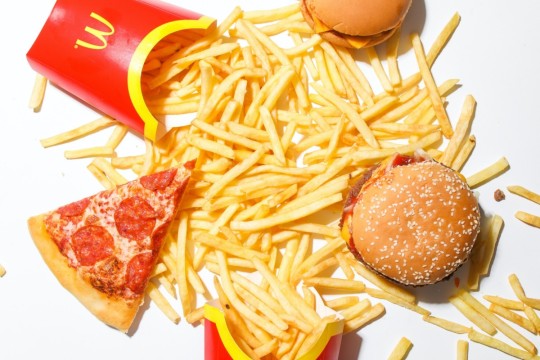
Exploitative KKKapitalism = Eating like 💩 in the neighborhood! "Studies have shown that the prevalence of fast-food restaurants is positively correlated with the percentage of Black residents in urban neighborhoods in the U.S. Similar trends have been found for liquor stores."
$Anything for a Dollar$
"While dollar stores can fill a need in low-income neighborhoods, they are often regarded as predatory businesses that harm communities more than they benefit them, due to very low wages, displacing other grocery options while failing to sell fresh food, store design that increases the rate of armed robberies, and OSHA and FDA violations that put customers and employees at risk."
Who Needs Fresh Food?
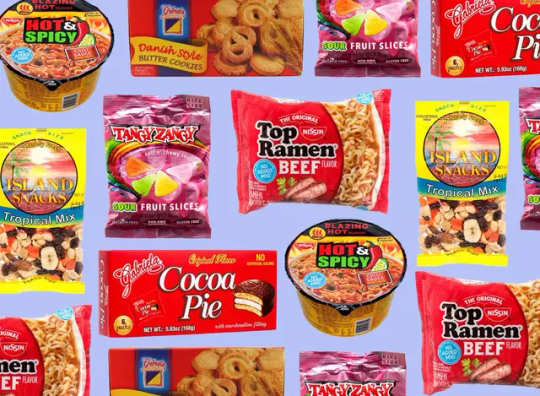
"There are no fresh vegetables, fruits, or meats in most dollar stores. And yet, as limited as their offerings are, dollar stores are now feeding more Americans than Whole Foods is, and they’re multiplying rapidly. Since 2011, the number of dollar stores nationwide has climbed from about 20,000 to nearly 30,000. There are now more dollar stores than Walmart and McDonalds locations combined."
Dollar Tree Customers = Permanent Underclass

"In their latest annual reports, Dollar General and Dollar Tree say they have identified thousands of new locations for dollar stores. The two chains are planning to expand their combined empires to more 50,000 outlets."
“Essentially what the dollar stores are betting on in a large way is that we are going to have a permanent underclass in America,” Garrick Brown, a researcher with the commercial real estate firm Cushman & Wakefield, told Bloomberg last year.
“The economy is continuing to create more of our core customer,” Dollar General chief executive Todd Vasos told investors last year.

"More than one-third of American adults, and 48 percent of African American adults, are obese."
13% of the US population is Black, and 48% of Black Americans are obese.

"Look at the pharmaceutical companies. In my neighborhood, there is a fast-food restaurant on every block, from Wendy’s to Kentucky Fried Chicken to Popeye’s to Little Caesar’s Pizza. Now drugstores are popping up on every corner, too. So you have the fast-food restaurants that of course cause the diet-related diseases, and you have the pharmaceutical companies there to fix it."
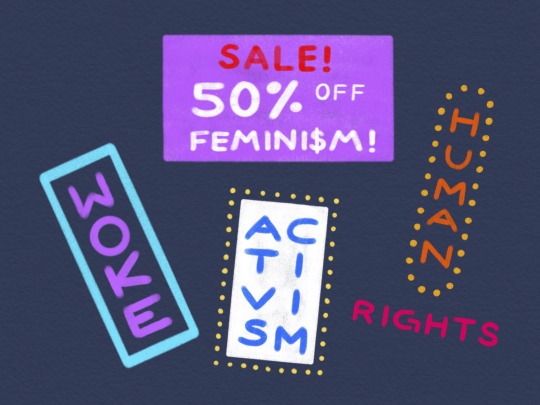
"If you give people access to really good food and a living-wage job, someone is going to lose money. As long as people are poor and as long as people are sick, there are jobs to be made. Follow the money."

"I talk about power, and how power is a drug and power over people is a drug and it’s hard to give up."
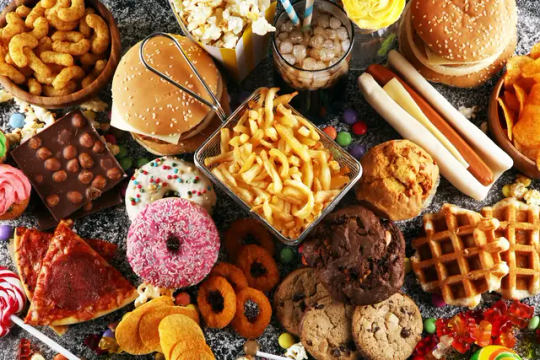
"A substantial body of evidence indicates that diet, toxic metals, food additives, insufficient nutrients, food allergy, lack of exercise can all contribute to criminal behavior. Evidence is mounting that a good diet makes a positive difference when working with some offenders."
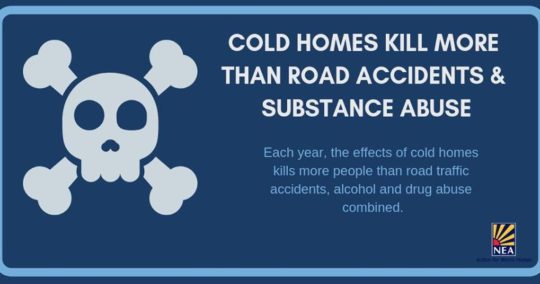
"Our estimates imply that the 42% drop in the natural gas price in the late 2000s, mostly driven by the shale gas boom, averted 12,500 deaths per year in the United States."

"Participants (60.55%) experienced unexpected or increased medical expenses (17.69%), job loss (13.64%), pay reduction (11.85%), and death of a family member (9.09%). Pay reduction and increased debt were associated with moderate hunger; death of a family member, pay reduction, and increased debt were associated with severe hunger."
Lung Cancer to Avoid Severe Hunger

"In unadjusted models, annual household income <$15,000, non-urban residence, lack of health insurance, unstable housing, heavier food pantry reliance, fair or poor adult health, adult anxiety, and adult smoking to reduce hunger pangs were all positively associated with VLFS-C."
Fast Food = Fast Death
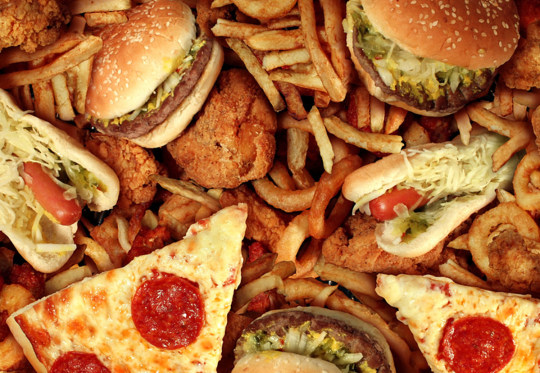
"Survey respondents had 8 ± 7 fast-food outlets within 2 miles of their home. Individuals living in close proximity to fast-food restaurants had higher BMIs, and lower fruit and vegetable consumption."
Happy Meal = Psychiatric Distress & Violence
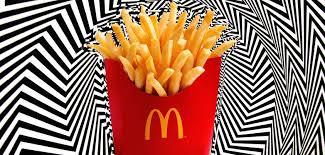
"Consumption of fast food has been linked to psychiatric distress, violent behaviors, and impulsivity in adolescents."

"The analysis found that liquor stores are disproportionately located in predominantly black neighborhoods, even after controlling for census tract socioeconomic status."

"At equal levels of poverty, Black neighborhoods had the fewest supermarkets."
#anti capitalism#socialism#social justice#black lives matter#anti capitalist#corporatism#cronyism#socialist#food insecurity#racial justice#predatory#exploitation#fast food#addiction#dollar store#poverty#late stage capitalism#obesity#big pharma#globalist agenda#living wage#food addiction#food additives#low income#alcohol
40 notes
·
View notes
Text
Come on in, get very comfortable
Obesogens are, according to the scientist who coined the term, "xenobiotic chemicals that can disrupt the normal developmental and homeostatic controls over adipogenesis and energy balance".
In other words, an obesogen might disregulate the creation of new fat cells, the size of those fat cells, a person's metabolism, or all three.
Obesogens, along with present social and cultural trends, are speeding along the increasing prevalence of obesity and super obesity worldwide, making us by far the fattest humans who have ever lived.
As diets all over the world become loaded with delicious ultra-processed food and people have steadily decreasing levels of physical activity and time spent outdoors, we live in the golden age of obesity.
To think that even just 20 years ago to see a person weighing 500 pounds was very rare. A sideshow fat lady in the 19th century may have weighed that much if the circus was very lucky, but more than likely not even close.
In real life I see people close to a quarter-ton out and about with some regularity. The industrial world's capacity to overwhelm us with pound after pound of blubber is incredible. What a time to be alive if you, as I do, truly desire only the biggest.
I created this blog in order to have a specific place where I can express myself freely to this effect and to share posts that align with the particularities of my lifelong love of obesity.
And so, I hope to be an obesogen, promoting obesity wherever the soil is fertile.
Oh, and that desk chair I used for my icon? It has a weight capacity of 1000 pounds, and a seat that is 36 inches wide :)
That enough people needed a chair like this to be able to work in a building that this chair was designed and produced is great sign of things to come, I think.
This blog contains dark themes and triggering language, be careful and if nothing else,
Be over 18 years old
I am not good with DMs, asks are scrumptious. Getting DMs does not bother me, but me being in the mood to answer them is a rare thing.
I love, respect and advocate for fat people in real life no matter what I put here and I hope you do too.
#freaks interact and non freaks do not interact#this is the law: the fatter the better#obesogen blog: pinned edited 24_11
56 notes
·
View notes
Text
I found this undergrad project online looking into the growth of adipophilia (fat fetishism).
Well worth a read as the guy gets kinda carried away!
It's reproduced here in full.
Adipophilia
How do cultural, societal, and technological factors intersect to shape the emergence and growth of adipophilia among young male adults in the digital age?
Shane Tjock
(Bachelor of Science student)
University of Michigan
Department of Environmental Philosophy
Obesity Studies
Abstract
This research project outlines a comprehensive approach to studying the growth of adipophilia (a sexual attraction to fat or overweight people) among young male adults online, integrating observational and experimental methods as well as qualitative and quantitative analyses to provide a holistic understanding of the phenomenon. Adipophilic tendencies have been on the rise in the United States and other western countries in recent years amongst young males and in particular within the homosexual population. The occurrence of sexual attraction to big, round, bloated bellies and buttocks, as well as thick thighs and swollen man breasts is clearly visible through social media platforms, forums, and so called ‘gainer’ dedicated websites. The rise of ‘gainer societies’ at colleges and universities, including the University of Michigan, evidences that the growth of gainerism is not limited to online spaces. Gainerism and feederism are linked sexual proclivities where people actively participate in a concerted effort to make themselves and or someone else fatter. Sexual arousal is often achieved through the act of binge eating or ‘stuffing’ until the stomach is stretched to the max after the consumption of excessive amounts of food and drink. Adipophiliacs like to rub their own and other people’s swollen bellies and elicit pleasure from the effects of purposeful weight gain, such as; out growing clothing, button popping, the appearance of stretch marks, and watching big bellies bounce. Pride is taken in calorie counting, measuring growth, and regular weigh-ins. As well as a personal increase in laziness, selfishness, and greed. The growth of gainerism amongst young LGBTQ+ males is multifaceted and has been caused by the normalisation of obesity in society, the overabundance and marketing of cheap unhealthy foodstuffs, a move towards body positivity, an increased awareness and openness to kink lifestyles, and the fact that it is sexy and fun.
Introduction
The rise of adipophilia as a cultural phenomenon is of interest to psychologists, sociologists, and fat fetishists. The question of why young men chose to over-inflate and swell their bodies with fat until their abdomens are abnormally round and swollen, like water balloons about to pop, is the key question of this study. What is it about huge, heavy, rounded-out bellies, that evidence the greed of the young male overconsumer, that is so deliciously desirable?
This study seeks to answer this question through a mix of observational and experimental techniques that provide both qualitative and quantitative evidence that the results of purposeful weight gain are hot as hell. Observations of publicly posted photos, videos, and conversations of male gainers will be carefully considered and analysed in order to identify common themes and factors related to stuffing your belly so full that it strains and stretches out inches over your belt, jiggling with every step you take. Due to the doubtful efficacy of feeding healthy participants up to the point of morbid obesity, the author has decided to partake in several gainer related activities himself and will rate them on a likert scale, from 1: Not at all arousing, to 5: Extremely arousing, in order to gather real world data into the immense joy of feeling oneself grow bigger and bigger everyday. As a voluntary participant the author will also undergo a regular testing and measurement routine in order to ascertain the effectiveness of various weight gain diets and to see if the experience of having one’s growth recorded is as hot as other gainers say it is.
Literature Review
There is a very limited amount of scientific literature on this topic, I have chosen therefore to give a brief overview of adipophilia in popular culture. The most commonly cited adipophilic book is Charlie and The Chocolate Factory, (Dahl, 1964), in which an extremely fat German boy wins a trip to a chocolate factory by eating an obscene amount of chocolate. His wonderfully greedy guts are then sucked up a pipe while he attempts to drink an entire chocolate river. A disappointing failure. It also includes a girl who inflates like a giant blueberry, but this study is not interested in girls. A recent prequel film, Willy Wonka (2023), features a heavy-set policeman who is fed chocolate bribes by chocolatier gangsters until he almost triples in size. A life goal for many. The Fattest Man in America (Nicholson, 2005) is a novel about a thousand pound man who eats himself up to a glorious size in order to become a tourist attraction. Alternatively The Fattest Man in Britain (2009) is a TV Movie (freely available on YouTube) starring Timothy Spall about a man who gets into an eating contest in order to prove that he is in fact the fattest. Heavyweights (1995) is a Disney film featuring the fat kids from The Mighty Ducks and a young Ben Stiller. It is set in a summer weight loss camp. The storyline features a lot of alarming similar events to the story of my friend Shawn when he went to fat camp. Life imitates art. The Simpsons (1989-Present) features several episodes in which characters gain weight, and I also used to fancy Kenen from Kenan & Kel (1996).
Research Objectives
To observe online gainer content in order to identify and analyse themes and factors that turn me on.
To experience the pleasure of gaining an insanely unhealthy amount of weight within a very short period in order to discover just how sexually gratifying it is.
To promote adipophilia as a lifestyle amongst other young gay men.
Observational Study
Design:
Conduct a systematic observation of online communities, forums, and platforms known for adipophilic content. Utilize qualitative methods to analyze discussions, interactions, and content shared within these communities.
Sample:
Select a diverse range of online platforms catering to a single interest and demographic.
Collect data over a specified time period to capture variations in content and user engagement.
Data Collection:
Employ data scraping techniques to collect publicly available content.
Record observations, noting patterns, themes, and prevalent attitudes towards adipophilia.
Analysis:
I have spent the last four months observing several online gainer platforms and websites. I have viewed thousands of photos and videos of fat growing men of all ages, from 18 years and up. Though I have a few doubts about all of them being at least 18 and for some reason I couldn’t really find any gainers much older than about 65. I am unsure as to why this is.
Common themes and factors that I have identified are; huge round bloated bellies, ball bellies, balloon bellies, and beer bellies. Some bellies hang low while others stick out really far. Some look soft and squishy while others look hard and round - as if the guy has swallowed a basketball whole. They are my favourite. All of them are wide, swollen, and beautiful. Gainers often eat in their videos and stuff themselves stupid on takeaways. They like to watch each other over-eat and encourage each other to eat even more. I often did this whilst being sure to maintain my distance as an observer. Other factors were; soft flabby love handles and muffin tops that overhang tight shorts and boxers. These were lush fat rolls that I watched grow fuller and thicker on many sweet boys. Moobs, man breasts, and titties are also very popular. Fat boys tend to get big flat nipples that accentuate their doughy chests. I like how once you’re fat enough your tits rest on top of the dome of your distended over-ripe belly.
In many videos boys play with their fat tits, they squeeze and caress them, while teasing the viewer to suck on them like they were a woman. They also like to rub and pat their bloated bellies. I would eat tacos and rub mine while watching them. Some guys burp really loudly after downing fizzy drinks. It makes them seem so wonderfully greedy. One guy on Tumblr did this in only his boxers and I swear I saw his dick twitch.
I didn’t do all of the data collection I was supposed to due to becoming distracted by all the sexy fat men, especially the comparison pictures that show you how they used to look when they were thin compared to now. Other reasons for this weakness in my study design will become obvious when I explain the experimental study.
My prevalent attitude towards adipophilia is very positive as is that of all the gainers I spoke to online. They love getting fatter, telling me about it, and sharing private pics with me via DM’s.
Below is a list of all the fat factors that I identified, my rating for how sexy they are, and my explanation of why they are so fucking hot.
Trying on old clothes - Level 4 - Super Hot - Because I love how it demonstrates just how much they must have eaten. Watching a fat young guy struggle to fit into a XXL shirt makes me super hard.
Button popping - Level 5 - Dick Burstingly Hot - As above, only better! Boys suck their bellies in to try and look as thin as they can and they breathe out. Their bulging bellies overwhelm their shirts or pants as they expand, sending buttons flying off as fast as it makes me cum.
Burping - Level 3 - Sexy - Burping due to overconsumption is cool. I think I prefer it when I do it myself compared to watching others. I love how the escaping gas creates extra space in my belly for even more food!
Shaking/Jiggling - Super Hot - Big bouncing ball bellies and just the best! They make me want to grab them and smash my face into them.
Trying to exercise - Level 2 - Kinda Hot - This one I don’t get so much. Why would anyone want to exercise? It goes against all of the glory or adipophilia. It is though kinda cool to see sweaty fat boys struggle on the floor.
Belly measuring and weigh-ins - Level 6 - Super Dick Burstingly Hot!! - Videos and photos where boys measure their belly circumference and stand on scales cause me to nut directly. I love how happy they seem when they see the benefits of all their gorging. It makes me so proud of them.
Experimental Study
Design:
Spend three months eating as much as humanly possible in order to see just how fat I can get with the help of my friends in the gainer society.
Sample:
Me!
Data Collection:
Quantitative data: Weekly weigh-ins and belly measurements.
Qualitative data: Personal record of how turned on I get by my gains.
Analysis:
I first decided to gain when a friend of mine told me about the new gainer society that meets every week at KFC. I had always found fat boys attractive and was overweight myself. My starting weight was 193 lbs. My friend knew that I liked being fat so he suggested that we go together. There was a guy there called Shawn, he was the fattest kid I’d ever seen. He was so cool! He ate like three family buckets to himself. I wanted to be able to do that. Shawn said that I had a good attitude and welcomed me to the group. I ate eight pieces of chicken, a burger with extra cheese, and three corn on the cobs. I felt so full and my belly ached as I walked home. I knew I needed more. That’s when I decided to do this study for my end of year project.
My friends in the UMGS thought that the project was a great idea and helped me to write a plan and food diary to ensure that I ate an extra 500 calories every day in order to expand my capacity and ensure growth. I stuck to it for the first week and then couldn’t be bothered any more so I just ate as much as I wanted. The plan was too restrictive and writing everything down all the time became a fucking ball ache. I just wanted to eat!
After two weeks I was noticeably fatter. My pants felt tighter and my t-shirt began to ride up my belly. Danni one day even pointed out that one of my love handles was on display in class. I started eating all the time and always snacked on Doritos and Snickers during lectures. I started to go topless in my room so that I could see and play with my fat while I did my observation study and snacked. I started jerking off more often. Gaining is definitely arousing.
After a month I needed bigger clothes and went to TJ Maxx to buy cheap shorts and t-shirts. I knew they wouldn’t last long! In the lunch hall my favourites were chilli dogs and fries, with chocolate fudge cake for dessert. I ate so much of it that my friends started to call me ‘Fudge’, I’d never had a nickname before!
My belly was now noticeably bigger. It protruded out and the front and felt heavy due to the fact that I kept it constantly stuffed to the brim. I could now cup my hand under it and lift it up. I love doing that. The fat feels so smooth and luxurious. My Mom even mentioned to me on a Zoom call that I looked like I’d gained weight. I told her that it was normal for guys at college. I was so impressed that I even looked fatter through a screen!
I kept eating and soon I could manage a family bucket at KFC with ease. I would drown the chicken in gravy, which Shawn said they make out of the fat scrapped from the bottom of the fryer. I so hope that this is true. I also started drinking nothing but Cola and Fanta and Beer. If it ain’t carbonated keep it the hell away from me! Brrruuurrrrppp!
From my observational study I learnt that some gainers like to rest their full bellies on a sink. I thought at first that this was just a bit weird and silly but then I tried it! I was amazed by how fat I felt resting my gorgeous growling gluttonous gut on top of the cold service. I spent ten minutes lifting and fondling it while I jerked off to my own reflection in the bathroom mirror.
By the end of the second month I felt massive! My dick was constantly as hard as my tightly packed stomach. Adipophilia is so sexy. I bought new clothes again and they already felt restrictive. My tits became more sensitive and I was overcome with pleasure when Danni sucked on them. They didn’t quite rest on top of my belly yet but I knew it wouldn’t be long.
In the lunch hall I turned to pizza and pasta and all the carbs. It was like the Atkins diet but in reverse. ‘Fudge’ was turning into a real fat boy. My thighs were thicker and began to chaff in the heat. At first this annoyed me but Shawn said that it was a sign of my progress and kindly offered to rub vaseline onto my groin for me. He said that my thighs were soft like two tubes of thick cookie dough. That made it feel much better.
With all the extra weight I was carrying I felt myself become more lethargic and lazy. I spent even more time in my room alone doing my observational study but lost the urge to continue with the boring data collection. All I wanted to do was eat, watch videos, and jack off. My gut is now so big that I really have to stretch to reach my dick when I’m sitting. When I lie down it still rises up into the air, whereas before it splayed out wide and flat while I slept. I guess it’s because I always have a pre-sleep meal of filling chow-mein and dumplings every night.
On the very last day of this study I returned to KFC by myself and ate three family buckets! I knew that I could do it! I was so proud of myself that I had to go into their bathroom and jack it while I farted ferociously on the toilet!
I would never have behaved like that before I got into adipophilia. I feel now like a much happier, sexier, more fun, and adventurous guy. I’m sad that this study is over, but I know that my adventure with gaining is only just beginning. I’m now 286 lbs and am determined to gain my first hundred. I am so close and just typing this makes me deliriously hungry. I’m gonna go stuff myself with a mountain of McDonalds before I write out my results which are summarised below.
Results
Month One:
Starting weight 193 lbs, Waist size 36 inches.
Main foods consumed: KFC, Chilli Dogs, Chocolate Fudge Cake.
End weight 216 lbs, Waist size 38 inches.
Turn ons: Outgrowing my pants, feeling my belly swell, burping.
Month Two:
Starting weight 216 lbs, Waist size 38 inches.
Main foods consumed: KFC, Chilli Dogs, Fries, Pasta, Pizza, Chocolate Fudge Cake, Doritos, Snickers.
End weight 245 lbs, Waist size 40 inches.
Turn ons: My fast ass ripping my boxers, eating so much that I actually puked, abdominal pains, lifting and massaging my soft silky overhang, my love handles spilling out in class.
Month Three:
Starting weight 245 lbs, Waist size 40 inches.
Main foods consumed: KFC, Chilli Dogs, Fries, Pasta, Pizza, Chocolate Fudge Cake, Doritos, Snickers, McDonalds, Chinese, Cheesecakes, Profiteroles, Tacos, Ice Cream, Chicken Wings, Candy. So much candy!
End weight 286 lbs, Waist size 42 inches (and feeling tight AF!!)
Turn ons: Red raw stretch marks that circle my deep belly button like a whirlpool sucking me deeper in to the world of gaining, my fat heavy circular tits that feel soft and squishy, eating despite the fact that my stomach is howling in pain due to being stuffed with delicious high calorie junk foods, licking Shawn’s ass out while he farts, knowing that I’m already a huge fat gluttonous pig that’s only going to grow rounder and fatter with every greedy day that passes.
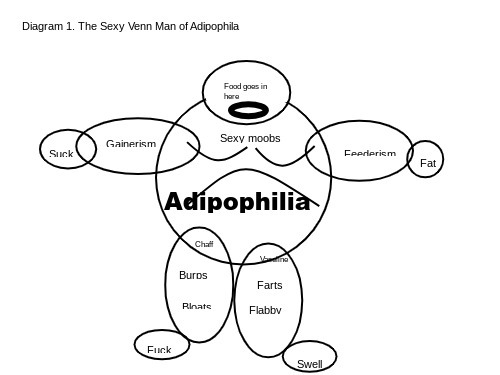
Implications and Recommendations
I recommend everybody to get into adipophilia. Fat is not only beautiful, it is tantalising, addictive, and highly erotic. Fat boys are the epitome of sexual desire and the most lush and lavish example of the human form. Big, round, heavy, ball bellies are the most attractive and every gay boy needs to have one. Social media and other online forums are a great way to get into adipophilia and the gainer/feeder scenes but nothing is better than doing it for real. Growing as fat as you can with the help of friends who want nothing more than to see you bulk out and grow into the fattest, roundest, blob of lard possible is unbeatable. Especially when they are more than happy to beat and suck you off while you gorge yourself on heavy milkshakes.
The personal implications for my belly and ass have been massive. They have both grown and swollen out immensely. Other gay boys love to watch and grope my fat ass as it bulges out of my straining gym shorts. It’s so soft and wide and round now, more of a balloon butt than bubble butt! The belly is so much bigger than it was. It loves what I have done to it and only wants more. It speaks to me now and says “Feed me!” all of the time. I have forgotten what it feels like to be hungry. A sensation that I never want to feel again. Being constantly full is the only way to be. The only way to ensure that I keep expanding.
Societal implications are also hugely positive. The more young guys who get into gaining then the more sexy fatties there will be for me to look at, encourage, play with, and fuck. Boys deserve to be fed to the brim with everything that they could ever desire and more. I want everyone to experience the advantages of the fat, lazy, and greedy lifestyle of a true glutton.
Conclusion
Adipophilia is on the rise and we should all welcome it with open arms and a tray of twenty four chocolate cream donuts! Through my observational and experimental studies I have discovered just how thrilling purposeful weight gain can be, both for the gainer and the people encouraging them. Online adipophilic content is growing every day, like my waistline, and I predict that it will continue to do so. I sincerely hope that adipophilia continues to develop into the mainstream and recommend any young male researchers interested in the topic to repeat and expand upon my study in order to help validate the scene. I promise that you will have a whale of a time!
#feederism kink#gay gainer#gaining fat#fat belly#fat boy#male wg#big fatty#gainer stories#weight gain stories#gay gainer stories#make me fat#fatty#fat bhm#get me fatter#fatboy#gaining weight#fat#gainerism#gaining weight on purpose#gaining on purpose#mutual gaining#gaining kink#gained weight#male feedism#research#gaining stuff#adipose#adipophilia#feeder feedee#feedee encouragement
34 notes
·
View notes
Text
It Was Never Enough
There was no doubt, Justin had gone through drastic changes over the years. From his squeaky clean image as a barely legal new comer to the pseudo thug tough guy he is today. But few people know the (main one of many) reason for his change was actually due to his poor financial management, coupled with gambling.

Few people recognize that many of his tattoos were the result of lost bets with friends or private auctions with fans to select tattoos (with an extra premium on special places). As a way to hide those tattoos, he had to get more just to make them look normal.


As soon as his popularity skyrocketed after turning 21, as more and more money came rolling in, his spending increased, quickly outpacing his earnings. By 25, he had no choice but to churn out more music because he had taken massive advances from the studio and had to pay them back.

And his money problems only got worse when he got married. He refused to curb his spending and refused to let his wife know how bad their situation was. Despite hemorrhaging money, he still threw it around. He even chartered a plane for a week to bring them on vacation for $100,000, a two hour car ride away, when first class tickets on a commercial plane round trip would have only been $1,000 total.
Live Shows
Finally his financial manager put his foot down and made Justin cut spending slightly and find new income streams, which resulted in private live shows for high paying clients. But it was never enough. After even private shows (with increasingly provocative content) wasn’t enough, his finance manager came to him with a possible solution, renting out his body.
Justin was reluctant but gave in when he saw how much high profile people were renting for. He once again (stupidly) refused to be represented at the meeting, choosing to represent himself. He felt like he had reached an amazing deal and thought he’d be debt free in no time, not realizing how bad his situation was. This poor (obscenely wealthy) guy was paying him $100,000 per day to use his body, until Justin was debt free.

After the swap, Justin saw his body walking out of the building thinking how he’d be himself again in no time. The only problem was Justin was so in debt that even at $100,000 per day, $3,000,000 month, $36,500,000 per year, it would take at least five years to repay what was owed. His former finance manager came up to his now old, obese body and told him “I can’t believe you accepted that offer, it will take years to repay at this rate.” Justin was astounded, he fought and raged. After a month of his new prison cell of a body he even set up a meeting with the agency and demanded the swap end. They were very polite and said “of course, we can end the swap right away,” “oh thank god, when can we do this?” “Immediately sir, as soon as the payment clears, the swap will occur.” Justin was confused, “what payment?” “Sir, the contract you signed, the contract you negotiated, specified that the swap would only end when the debt was repaid. Until that time, only the new Mr. Bieber can decide to break the agreement by agreeing to accept what has been paid already as payment in full. I take it you are not ready to make payment now?” Justin was forced out of the office as he tried to fight.

Justin tried to FaceTime his body, and when it connected, he saw it was smoking a cigar. Justin started to yell again but the call disconnected. He tried to call back but was greeted by an error message. Then a call came in from an unknown number, “Hey MITCH, sorry bro, but I don’t want you calling me directly. I just blocked you from MY phone. This is a pay phone, I didn’t know these still existed haha. Don’t try to contact me until you’re ready to pay me everything you owe to swap back. I don’t have time to deal with you.” And the number disconnected.
Month after money, he watched his balance owed decline slowly. He owed so much that even the astronomical payments mostly covered interest. It took 15 years to finally be repaid. Justin’s body was not past his prime and had lost most of its earnings potential.
@mr2swap
61 notes
·
View notes
Note
I want to take you away somewhere, cut off contact with the world for awhile. I want to spend that time feeding you rich, decadent meals and letting you do your favorite things - movies, video games, long naps, whatever you enjoy - and of course ending every day with beautiful, passionate fucking. After several months, I'll take you back home. You won't be unrecognizable, but your transformation will be evident: no longer the twink you once were, but now a beautiful, fattened, well-fucked fatboy. And it's not over, of course. You introduce me as your new boyfriend. Your friends and family are taken aback a bit, of course - your new boyfriend is more than twice your age, old enough to be your dad! - but they'll get used to it when they see how princely you're being treated. But they'll notice something else, too: I'm a bit handsy, a bit pushy. When we're out to dinner, I order for you, and seem to order a lot. I pat your belly and your butt around them, showing a bit of pride, and a bit of ownership over how you've grown. You're oblivious to this, of course. You've come to enjoy the feeling of being full, of being fucked so regularly that your ass is used to being a bit sore. You've also grown used to being so pampered and so taken care of that when you see me you feel nothing but love and desire. A few years go by. You've blossomed so beautifully. Out to dinner one night, you're surprised when I get on one knee and ask you to marry me. You accept right away, of course. Again, your friends and family are a bit unnerved - their son in their 20s is marrying someone now nearing retirement age. They whisper, too, about how you've changed, how the svelte boy of his teens is now a lazy, pampered obese husband of a man who could be his dad. But your joy is too much for them to ignore, so they're happy. But now as happy as you. You've changed so much. You're fat, you're lazy, you don't have to lift a finger, but you radiate joy in your new life. We build a life together, of course: long vacations, big meals, wonderful memories. You don't fly much - you're too fat to do so comfortably - so we take cruises and long car rides. We start a family, raising a big pack of kiddos. You're the stay-at-home dad, and while you're perhaps not as mobile with them, you're a big hit at Christmastime as Santa. As the kids grow older, people find our situation a bit odd: a young morbidly obese dad and his retired husband. Yet we dote on our kids - you don't need to work, of course, and I'm retired - and create a loving, if unconventional home. But of course I continue to dote on you. After the kids go to bed, I go to town, feeding you big meals after midnight. As I've gotten older, my libido has only increased, so our lovemaking is long and passionate and intense. I monitor your health religiously. For being as fat as you are, you're remarkably healthy. But of course, things take their toll. But I'm there to support you all the way. You're now approaching your 40th birthday. It's a life you never would've imagined for yourself at 20, but it's a beautiful, weird, fat life.
Thoughts?
I love this so much!! I'll be so fat and happy. I love getting pampered wish you could make it a reality ;)
8 notes
·
View notes
Note
Hi! College Professor anon here with yet another silly idea: Werewolves are known College AU where Stiles is a Biology student focusing on Lycanthropy and Derek is a jock on a Football scholarship. Stiles decides to write his MA thesis on two subjects 1. How much can a werewolf possibly eat and 2. Is it truly impossible for werewolves to gain weight to obesity. Derek is a reluctant test subject that goes from annoyed to definitely horny and slob. Cue lots of overfeeding and gassy moment lmao
LOVE it. Derek is bribed into it by "sex and free food" which.... is hard to turn down when you're a freshman year jock. And maybe because he's a little too confident that as a werewolf? He can't gain weight. He's never seen a chubby werewolf, never mind an obese one. At first he complains about all the shakes Stiles has him drinking to "Supplement his diet"....but it isn't long before Stiles finds the right strains of wolfsbane to increase Derek's appetite and slow his metabolism. Starts getting Derek to associate being "stuffed beyond belief" by showing him gainer porn...or promising to jerk him off if he just finishes this one last burger. Derek is easily manipulated by flattery and Stiles willingness to do anything he asks...if it involves food. (Which comes in handy by their senior year when Derek gets too fat to reach under his sweaty folds to get himself off, and Stiles has him chugging gallons of wolfsbane infused shakes before he'll finally let Derek come) It takes a little bit of persuasion, but after enough nights of "forget practice, it's endless wing nights!" or "You worked so hard at the gym last week...take this week off" - Derek eventually puts on enough weight and gets out of shape enough that even with the werewolf strength - he's a little winded and tired after practice. He quits the team to "focus on schoolwork" after his first semester of 2nd year and moves in with Stiles...which cements his descent into obesity. Stiles does his homework for him. Derek barely leaves the dorm, spends most of his time jerking off, sleeping, fucking, and eating (and Stiles has him on a very aggressive overfed schedule). The dorm becomes a total pigsty (Stiles takes copious amounts of pictures for his study. Derek gets lazier -and pushed by Stiles not to burn any calories - so he barely waddles down the floor to the showers. Never does laundry and wears the same pair of university sweats until holes start to appear and seams start to rip...and then Stiles gets him a new pair. His constant high fat diet almost guarantees, werewolf or not - Derek's got some gassy side effects. "Is this UAAARrrrp supposed to Bllbbbffffrt happen?" "You ate enough Chinese takeout to open a buffet, yeah, you're gonna be gassy, Derek." ***
Derek does still go to the University football games. Mostly so Stiles can watch him try and squeeze into his old football uniform to "support the team" and so he can feed Derek an endless supply of nachos and pretzels with a bucket of cheese and a 12 pack of beer. (listening to Derek's teammates shock at his size is just a happy coincidence) "Dude, what the fuck happened?" "Helping braaaaap Stiles with a paper or pffpfFRTpblt project or some- burp- thing." "Are you sure this is for research? You're getting kinda big, man....." Derek shrugs, as oblivious to Stiles' thesis as he is to the huge cheese stain on his shirt. *** Stiles' final thesis is waddling Derek in front of the advisors for a demonstration. On a poster he has the chart of Derek's weight and calorie intake by each month , which shows at first a slowly increasing line for it starts shooting straight up. Derek is completely unaware - or could care less- about the board of professors sitting in front of him and instead sits at a table on the side that's almost overflowing with takeout and starts eating. Stiles starts walking around him - grabbing handfuls of his belly or arm fat or double chin to point things out. "His healing factor takes over quickly - you can see stretchmarks will start to appear and then rapidly heal." Derek merely stops to rub his belly for a few seconds, wipe his mouth on the back of his hand, then goes back to eating." "As you can see, the lycan's healing ability means they can virtually eat continuously, as long as their appetite is properly stimulated.......this meal alone is over 20,000 calories. Want more, Derek?" "Yes *nglp* Stiles. FprrpffrRrbtlbllltTT" "of course, since his body is constantly processing such a fatty, high-calorie diet, there are some...gaseous side effects." Derek remains unbothered, football jersey fitting like a sports bra and shorts completely hidden by his lovehandles and belly.
48 notes
·
View notes
Text

Monday SpaceTime 20240930 Series 27 Episode 118
Dark matter may experience forces beyond gravity
A new study has raised the fascinating hypothesis that dark matter may experience forces other than gravity.



A rare naked eye comet visible from Earth
If you’re up early in the mornings over the next few days you may get a chance to see a rare naked eye comet.



Could humans be walking on Mars in four years
Former US President Donald Trump says he would like to see humans walking on the red planet Mars by 2028, at least eight years earlier than existing plans






The Science Report
The link between obese mothers and autism.
Global warming causing an increase in the size, frequency, and severity of forest fires.
Archaeologists have discovered what could be the world's oldest cheese.

Skeptics guide to crop circles
SpaceTime covers the latest news in astronomy & space sciences.
The show is available every Monday, Wednesday and Friday through Apple Podcasts (itunes), Stitcher, Google Podcast, Pocketcasts, SoundCloud, Bitez.com, YouTube, your favourite podcast download provider, and from www.spacetimewithstuartgary.com
SpaceTime is also broadcast through the National Science Foundation on Science Zone Radio and on both i-heart Radio and Tune-In Radio.
SpaceTime daily news blog: http://spacetimewithstuartgary.tumblr.com/
SpaceTime facebook: www.facebook.com/spacetimewithstuartgary
SpaceTime Instagram @spacetimewithstuartgary
SpaceTime twitter feed @stuartgary
SpaceTime YouTube: @SpaceTimewithStuartGary
SpaceTime -- A brief history
SpaceTime is Australia’s most popular and respected astronomy and space science news program – averaging over two million downloads every year. We’re also number five in the United States. The show reports on the latest stories and discoveries making news in astronomy, space flight, and science. SpaceTime features weekly interviews with leading Australian scientists about their research. The show began life in 1995 as ‘StarStuff’ on the Australian Broadcasting Corporation’s (ABC) NewsRadio network. Award winning investigative reporter Stuart Gary created the program during more than fifteen years as NewsRadio’s evening anchor and Science Editor. Gary’s always loved science. He studied astronomy at university and was invited to undertake a PHD in astrophysics, but instead focused on his career in journalism and radio broadcasting. Gary’s radio career stretches back some 34 years including 26 at the ABC. He worked as an announcer and music DJ in commercial radio, before becoming a journalist and eventually joining ABC News and Current Affairs. He was part of the team that set up ABC NewsRadio and became one of its first on air presenters. When asked to put his science background to use, Gary developed StarStuff which he wrote, produced and hosted, consistently achieving 9 per cent of the national Australian radio audience based on the ABC’s Nielsen ratings survey figures for the five major Australian metro markets: Sydney, Melbourne, Brisbane, Adelaide, and Perth. The StarStuff podcast was published on line by ABC Science -- achieving over 1.3 million downloads annually. However, after some 20 years, the show finally wrapped up in December 2015 following ABC funding cuts, and a redirection of available finances to increase sports and horse racing coverage. Rather than continue with the ABC, Gary resigned so that he could keep the show going independently. StarStuff was rebranded as “SpaceTime”, with the first episode being broadcast in February 2016. Over the years, SpaceTime has grown, more than doubling its former ABC audience numbers and expanding to include new segments such as the Science Report -- which provides a wrap of general science news, weekly skeptical science features, special reports looking at the latest computer and technology news, and Skywatch – which provides a monthly guide to the night skies. The show is published three times weekly (every Monday, Wednesday and Friday) and available from the United States National Science Foundation on Science Zone Radio, and through both i-heart Radio and Tune-In Radio.
#science#space#astronomy#physics#news#nasa#astrophysics#esa#spacetimewithstuartgary#starstuff#spacetime#jwst#james webb space telescope#hubble space telescope
8 notes
·
View notes